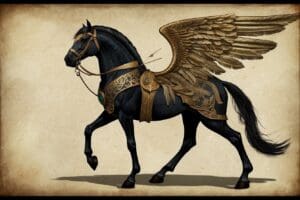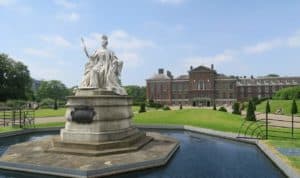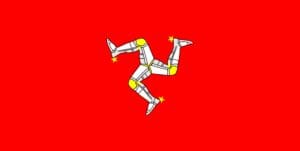The Rise and Downfall of Edward II of England
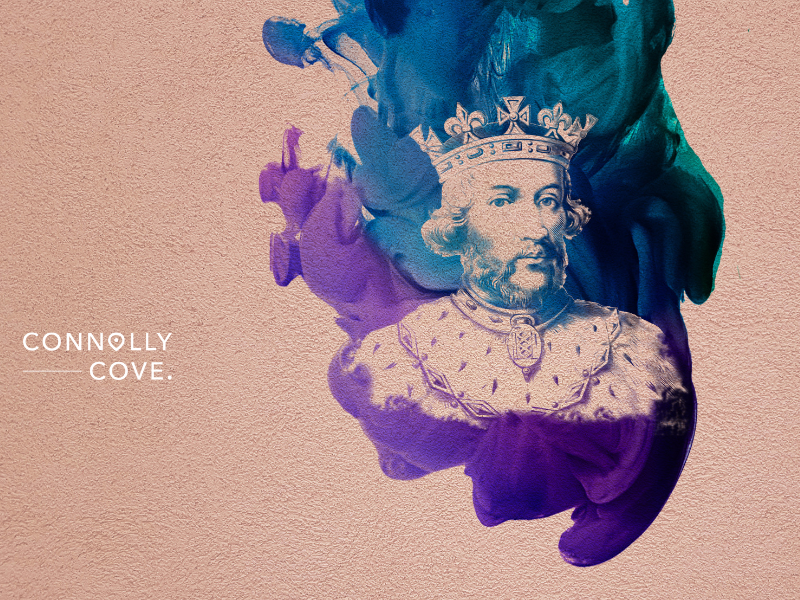
Updated On: December 09, 2023 by Noha Basiouny
Spanning from 1307 to 1327, the reign of King Edward II stands as one of the most disheartening and tumultuous chapters in the annals of English history. It was marked by political intrigue, personal turmoil, and both grandeur and grave challenges, ultimately culminating in a tragic and mysterious end that has fuelled historical debate for centuries.
King Edward II inherited a kingdom grappling with the aftermath of his father’s ambitious military campaigns. From the outset, Edward II faced the formidable task of navigating a realm in flux, dealing with the complex relationships within the royal family, and asserting his authority in the face of looming external threats.
In today’s article, we are set to dive into the life of King Edward II, exploring the highs and lows of his monarchy, the pivotal events that defined his rule, and the enigmatic circumstances surrounding his demise. So, grab your proverbial deerstalker cap as we nudge open the creaky doors of medieval times and delve into this mesmerising tale that still subtly reverberates across centuries.
King Edward II
King Edward II of England was born on 25 April 1284 in Caernarfon Castle in Wales. As the fourth son of King Edward I and Queen Eleanor of Castile, he ascended to the throne following the death of his father in 1307, whose reign, unlike his son’s, was marked by strength and authority.
Edward I was a formidable and ambitious monarch. He pursued an assertive policy in Wales, conquering it and incorporating it into the English crown and led military campaigns to Scotland as well. He also implemented legal reforms, including the Model Parliament of 1295, which laid the foundation for representative government. His strong leadership and strategic prowess left a lasting impact on England’s governance and military structure.
His son, Edward II, turned out to be the complete opposite.
As a royal child, Edward II received a thorough education and learnt Latin, French, and English, alongside training for warfare and courtly life. Despite that, Edward’s early years were marked by a lack of close parental bonds. His mother, Queen Eleanor, was frequently absent with his father, leaving him to spend much of his time with his foster mother, Alice de Leygrave.
This upbringing, coupled with the queen’s death when Edward II was just six years old and his personality described as “unwarlike”, may have sown the seeds for Edwrd’s later struggles as king, which we will delve more into in a bit.
Before Edward II was born, Edward I sought to strengthen English authority in Wales, as we mentioned earlier. In 1282-1283, he conducted military campaigns to conquer the independent Welsh principalities. The culmination of these campaigns was the defeat of Llywelyn ap Gruffudd, the last native Prince of Wales.
As part of his broader strategy to integrate Wales more closely into the Kingdom of England and foster a sense of unity within the newly conquered territory, Edward I made his son Edward II the Prince of Wales on 7 April 1301. He was only 17 at the time.
Prince of Wales
The appointment of Edward II as the Prince of Wales marked a significant moment in the history of Wales and the Plantagenet monarchy, as well as the life of Edward II himself.
On the one hand, it did not immediately result in smooth governance or complete assimilation of Wales into the English kingdom. Wales continued to experience resistance and unrest in the subsequent years, and it took time for the English crown to fully establish control over the region.
However, this very unrest introduced Edward II to governance and politics. It granted him power and responsibility, exposed him to the complexities of leadership, and laid the groundwork for both his triumphs and failures as King of England.
Early Campaigns in Scotland
Edward II’s early campaigns in Scotland were marked by military struggles and a significant defeat that had lasting consequences for both his reign and the relationship between England and Scotland. One of the key events during this period was the Battle of Bannockburn in 1314.
Prior to Edward II’s reign, his father, Edward I, had sought to exert English control over Scotland too, leading to the First War of Scottish Independence (1296–1328). The conflict intensified during Edward II’s rule, with him inheriting the challenges and ambitions of his father. In 1314, faced with ongoing resistance from the Scots, Edward II personally led an expedition to Scotland to quell the rebellion and reassert English dominance.
The peak of Edward II’s campaign was the Battle of Bannockburn, fought on 23-24 June 1314. Despite having a larger and better-equipped army, Edward II’s forces were decisively defeated by the Scots. The tactical brilliance of Robert the Bruce, the Scottish king, bolstered Scottish morale and demonstrated that a determined and well-led force could resist English domination, and it did.
The defeat at Bannockburn was a significant blow to the English army’s prestige, which had been considered formidable, as well as Edward II’s reputation. It weakened Edward’s hold on Scotland and played a crucial role in solidifying its independence. In addition, it further strained Edward II’s relationship with the English nobility, as it highlighted his military failures that further undermined his credibility as a leader.
Tensions with Barons
It was about this time when Edward II started receiving criticism from the English nobility which later, and thanks to the king’s very actions, developed into intense opposition, conflicts, and even rebellions by powerful barons who sought to curtail the king’s authority.
One of the reasons that created such opposition was Edward II’s financial mismanagement and extravagant spending. This, paired with heavy taxation to fund his military campaigns, irked the barons, who were burdened by the economic consequences of his policies. That is why the barons were even outraged by the decisive defeat at the Battle of Bannockburn in 1314, which did not but damage the king’s reputation altogether.
Influence of Piers Gaveston
Another thing that intensified the barons’ opposition was the king’s personal relationships, particularly with his favourite, Piers Gaveston, who pretty much played a significant role in the political turbulence that would characterise the remainder of Edward II’s reign and cause his downfall.
Gaveston’s father served in the household of Edward I, and as a result, Piers and Edward II developed a close friendship during their youth, and their companionship continued into adulthood.
Though it did not stop here. This companionship developed into favouritism towards Gaveston. Gaveston was given titles, lands, and privileges that were traditionally reserved for the nobility. This preferential treatment angered many barons and earls, who saw Gaveston as an interloper and resented the influence he had over the king.
In an attempt to limit the king’s authority, stop his extravagant spending and abuse of royal power, and reform the government, the barons established the Ordinances in 1311. With these regulations, the barons, led by powerful figures such as Thomas, Earl of Lancaster, who was the king’s very cousin by the way, exiled Gaveston to distance him from Edward II.
Piers Gaveston’s story came to a tragic end in 1312 when he was captured and executed by the barons without trial. This event further strained the relationship between Edward II and the rebellious barons and caused turmoil in the king’s reign.
Rebellion of Thomas of Lancaster
The death of Gaveston did not resolve the underlying issues that had contributed to the tensions between the king and his barons. In fact, it exacerbated the situation, as Edward II remained unable or unwilling to address the concerns of the nobility and continued to engage in actions that fuelled their discontent, which somewhat led to the rebellion of Thomas of Lancaster.
Thomas was himself a powerful and ambitious figure, and he may have seen the rebellion as an opportunity to increase his own power and influence within the kingdom.
The first phase of the rebellion, between 1316 and 1317, saw Lancaster and other barons in open revolt against Edward.
However, the king could gradually regain control in the following years thanks to the aid of the Despenser family, whose influence became an even bigger threat than that of Gaveston.
Rise of the Despensers
Hugh Despenser, often referred to as Hugh Despenser the Elder, was an influential and controversial figure in the court of King Edward II of England during the early 14th century. He belonged to the powerful Despenser family. In the years following Gaveston’s death, Despenser the Elder began to ascend in influence.
By 1318, Hugh Despenser the Elder had become a trusted adviser to the king, and his standing continued to strengthen in the early 1320s. His and his son’s, called Hugh Despenser the Younger, increasing prominence in the royal court and the way Edward II favoured them stirred resentment among the barons, echoing the earlier controversies surrounding Gaveston.
For instance, Edward II bestowed numerous titles, lands, and privileges upon Hugh Despenser the Younger. The Despensers were then accused of abusing their positions and exploiting royal patronage.
Another thing that contributed to the political turmoil of the time was the enmity between the Despensers and Roger Mortimer, who was a powerful and influential Marcher lord.
In 1321, the barons formally presented their grievances to the king, demanding the removal of Hugh Despenser and the implementation of political and financial reforms. When the king rejected their demands, Thomas of Lancaster and Roger Mortimer rebelled against the king and his favourites.
On 16 March 1322, the rebellion culminated in the Battle of Boroughbridge, where the forces of the baronial opposition clashed with those loyal to the king. The battle was concluded with a decisive victory for the royalists. Thomas of Lancaster was captured and executed while Mortimer was sentenced to life imprisonment; however, he was able to escape in 1323 and fled to France.
Rift with Isabella
Edward II and Isabella of France were married on 25 January 25 1308, just about a year into his reign as King of England. This marriage, however, was part of a political alliance between England and France intended to strengthen diplomatic ties between the two kingdoms.
Isabella and Edward II had two children who survived infancy: Edward III, who would later become a significant English monarch, and Joan of the Tower. Yet, their marriage faced challenges, and over time, tensions arose between Edward II and Isabella. The king’s favouritism we mentioned earlier, for instance, contributed to the strain in their relationship and deepened the rift between them over time.
Abdication and Imprisonment
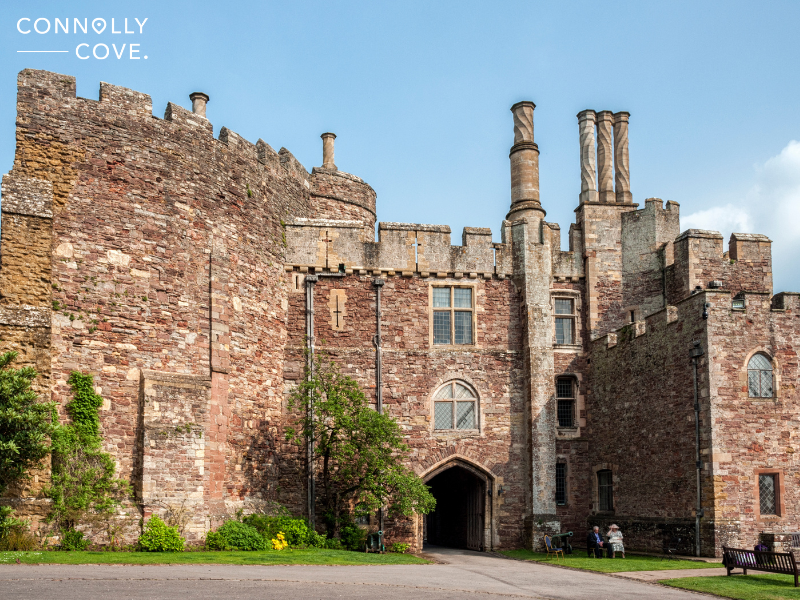
In 1325, Isabella was sent to France by Edward II to negotiate with her brother, King Charles IV. During her stay, she formed a close alliance with Roger Mortimer and together, accompanied by a small army; they returned to England in 1326. Initially, the invasion was framed as an attempt to address grievances against the Despensers and secure the rights of her son, the future Edward III.
Hugh Despenser the Younger, along with his father Hugh Despenser the Elder, was captured in November 1326. Both Despensers were subjected to a summary trial, and Hugh Despenser the Younger was executed by hanging in November 1326.
By 1327, Isabella and Mortimer had gained support from discontented barons and clergy, which later compelled the king to abdicate in favour of his son, who became Edward III. Edward II was subsequently imprisoned in Berkeley Castle.
Death
The exact circumstances of King Edward II’s death remain a subject of historical debate and uncertainty. The official historical account asserts that Edward II died on 21 September 1327 while imprisoned in Berkeley Castle. The commonly accepted cause of death, according to official records, is natural causes, possibly related to illness.
However, numerous alternative theories and speculations have arisen over the centuries, contributing to the enduring mystery surrounding Edward II’s death. Some of the prominent alternative theories include the possibility of murder or assassination, while other more controversial suggestions propose that Edward II might have escaped and lived in secret.
Despite these alternative theories, the lack of concrete evidence and the challenges of interpreting historical accounts make it difficult to definitively determine how Edward II died. The mystery surrounding his death adds a layer of intrigue to the historical narrative and underscores the complexities of uncovering the truth about events that occurred in medieval times.
The echoes of Edward II’s reign reverberate through the corridors of power, marked by the persistent struggles between the crown and the barons, the influence of ill-fated favourites, and the overarching impact of military endeavours on the nation’s fortunes.
In the end, King Edward II remains both a historical figure and a mysterious enigma, inviting us to ponder the complexities of leadership enduring the allure of historical puzzles that continue to captivate our imaginations.


